Sevanagama Villa’s unique location in Habarana, in the North Central province, makes possible exciting day trips to important landmarks in the cultural triangle of Sri Lanka. Sevanagama is also well placed for observing wildlife (elephants in particular) in the closeby Minneriya and Kaudulla national parks.
Activities
Anuradhapura and Polonnaruwa cultural sites can be reached within an hour by road from Sevanagama. Dambulla World Heritage site is a 30 minute drive away. Sigiriya Lion Rock is a 20 minute drive. Other close locations include: Ritigala Forest Monastery, Habarana Buddhist temple, Namal Uyana, Pidurangala rock and the Hurulu Eco Park.
There is plenty to see and do in the close vicinity for guests who decide to relax in the comfort of Sevanagama. The Habarana lake is a must visit and a good location to experience tame elephants. Birdwatching, hiking, and mountain biking outings are easily arranged at Sevanagama.

Must Visit Locations
Dambulla Cave Temple / Golden Temple
Dambulla Cave Temple, also known as the Golden Temple of Dambulla, is a World Heritage site in Sri Lanka, situated approximately 10 kms away from Sevanagama.
A sacred pilgrimage site for 22 centuries, this cave monastery, with its five sanctuaries, is the largest, best-preserved cave-temple complex in Sri Lanka. The Buddhist mural paintings (covering an area of 2,100 m2) are of particular importance, as are the 157 statues.
Dambulla is the largest and best-preserved cave temple complex in Sri Lanka. The rock towers 160 m over the surrounding plains. There are more than 80 documented caves in the surrounding area. Major attractions are spread over five caves, which contain statues and paintings.
The Dambulla cave monastery is still functional and remains the best-preserved ancient edifice in Sri Lanka. This complex dates from the third and second centuries BC, when it was already established as one of the largest and most important monasteries.
(Courtesy: Wikipedia / whc.unesco.org)

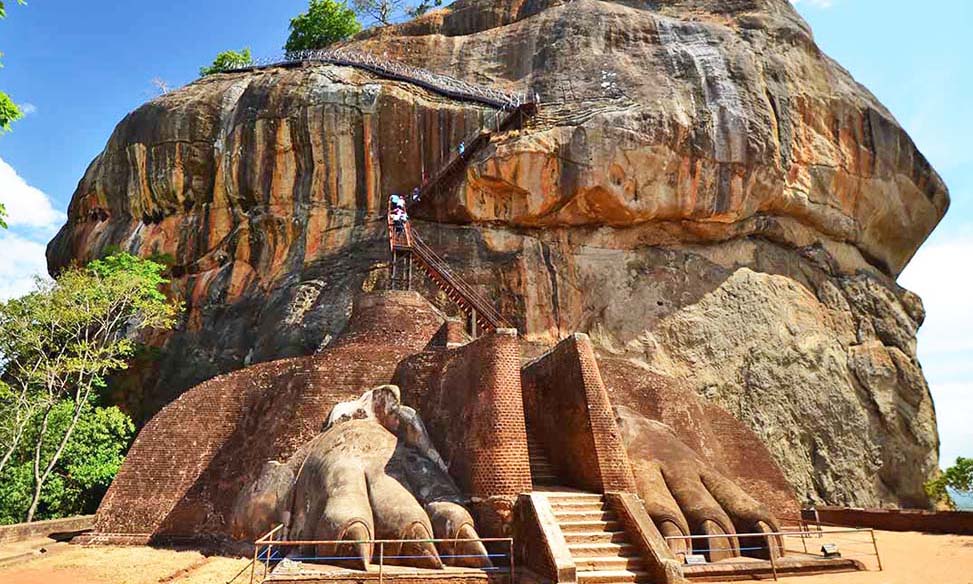
Sigiriya Lion Rock
Sigiriya or Sinhagiri is an ancient rock fortress located in the northern Matale District near the town of Dambulla in the Central Province, Sri Lanka, and approximately a 20 minutes drive from Sevanagama.
The name refers to a site of historical and archaeological significance that is dominated by a massive column of rock nearly 200 metres (660 ft) high. According to the ancient Sri Lankan chronicle the Culavamsa, this site was selected by King Kasyapa (477 – 495 CE) for his new capital. He built his palace on the top of this rock and decorated its sides with colourful frescoes. On a small plateau about halfway up the side of this rock he built a gateway in the form of an enormous lion. The name of this place is derived from this structure — Sīhāgiri, the Lion Rock. The capital and the royal palace was abandoned after the king’s death. It was used as a Buddhist monastery until the 14th century.
Sigiriya today is a UNESCO listed World Heritage Site. It is one of the best preserved examples of ancient urban planning.
(Courtesy: Wikipedia)
Ancient city of Polonnaruwa
Poḷonnaruwa is the main town of the Polonnaruwa District in the North Central Province of Sri Lanka. Kaduruwela area is the Polonnaruwa New Town and the balance area of Polonnaruwa remains as the royal ancient city of the Kingdom of Polonnaruwa.
Polonnaruwa was the second capital of Sri Lanka after the destruction of Anuradhapura. It comprises, besides the Brahmanic monuments built by the Cholas, the monumental ruins of the fabulous garden-city created by Parakramabahu(I) in the 12th century.
The ancient city of Polonnaruwa remains one of the best planned archaeological relic cities in the country, standing testimony to the discipline and greatness of the Kingdom’s first rulers.
Polonnaruwa is the second largest city in the North Central Province and considered one of the cleanest and most beautiful cities in the country. The green environment, amazing ancient constructions, Parakrama Samudra (a huge lake built in 1200 AD), and hospitable people, are a draw to tourists.
(Courtesy: Wikipedia)
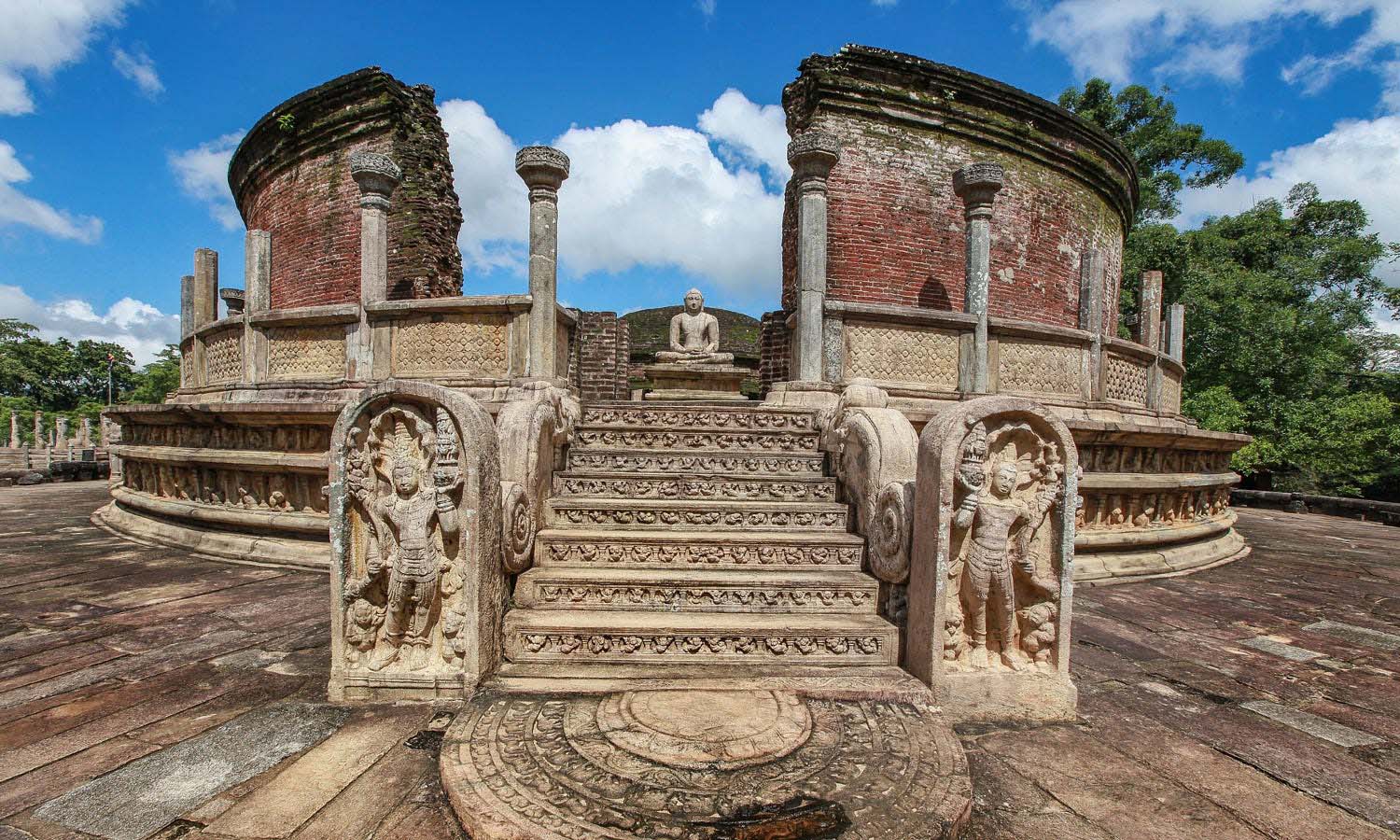
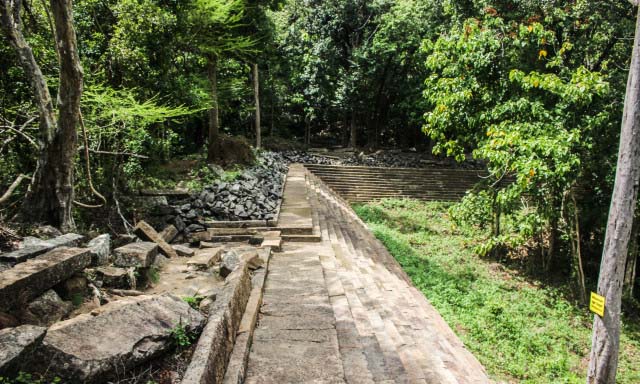
Ritigala Forest Monastery
Ritigala is an ancient Buddhist monastery and mountain in Sri Lanka. The ruins and rock inscriptions of the monastery date back to 1st century BCE. Ritigala is a fifteen minute drive away from Sevanagama.
Ritigala mountain range consists of four peaks of which the main and the highest peak at the south of the range is named Ritigala Kanda. Ritigala mountain range, a 1,528 ha (3,780 acres) Strict Nature Reserve, in the Dry Zone of Sri Lanka.
At 766 m (2,513 ft) above sea level, and 600 m (2,000 ft) above the surrounding plains, Ritigala is the highest mountain in northern Sri Lanka. The modern name Ritigala is derived from the ancient name ‘Ariṭṭha Pabbata’ (Dreadful Mountain), mentioned in the Mahavamsa.
Its elevation is higher than the other main tourist attractions of the north central plains, namely Sigiriya, Dambulla and Mihintale. The significance of this topographical feature lies in the abrupt sheerness of the massif, its wooded slopes and wet microclimate at the summit. During the North-East monsoon (December to February), Ritigala experiences the highest rainfall (125 cm) of the entire dry zone.
The ruins of Ritigala monastery are located on the eastern side of the mountain at the foot of the gorge which separates the main peak from the northern ridge of the range. The ruins cover an area of 24 hectares (59 acres). The monastery precinct begins close to the foot of the reservoir named ‘Banda Pokuna’. The ancient man-made reservoir is a feat of engineering marvel with a bund of polygonal plan completing a circumference of 366 meters.
(Courtesy: Wikipedia)
Minneriya National Park
Minneriya National Park is located the North Central Province of Sri Lanka. The area was designated a national park in 1997, having been originally declared a wildlife sanctuary in 1938. Minneriya National Park is approximately a 20 minute drive away from Sevanagama.
Large numbers of Sri Lankan elephants are attracted to grass fields on the edges of the reservoir during the dry season. The Minneriya tank contributes to sustain a large herd of elephants. Elephants gathering at this location number around 150-200. Some reports indicate as many as 700 elephants. They migrate here from the Wasgamuwa National Park and benefit from food and shelter of the park’s forest. Tourists visit Minneriya mainly to view the elephants, especially in the dry season.
The park is an important habitat for the two endemic monkeys of Sri Lanka: purple-faced langur and toque macaque. Large herbivorous mammals such as Sri Lankan sambar deer and Sri Lankan axis deer frequent the park. Rare and endangered species such as Sri Lankan leopard and Sri Lankan sloth bear inhabit Minneriya. Minneriya is one of the areas where the gray slender loris is found in Sri Lanka.
The Minneriya reservoir is an important habitat for large water birds such as lesser adjutant, painted stork, and spot-billed pelican. Minneriya is a dormitory for many resident as well as migrant bird species. Flocks of 2000 little cormorants have been reported. Great white pelican, ruddy turnstone, and grey heron are the other water birds here. Among the endemic birds are Sri Lanka junglefowl, Sri Lanka hanging parrot, brown-capped babbler, Sri Lanka grey hornbill, black-crested bulbul and crimson-fronted barbet.
(Courtesy: Wikipedia)
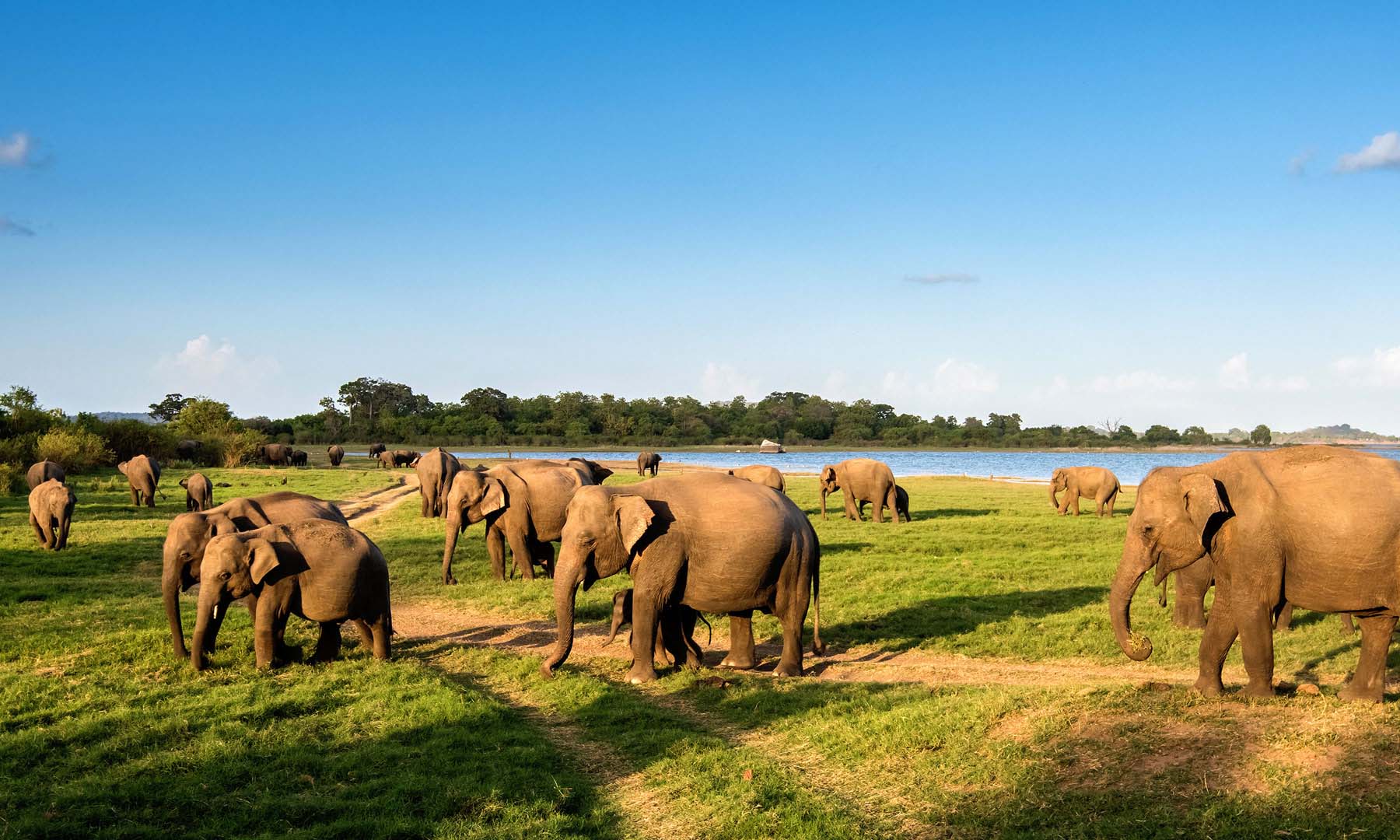
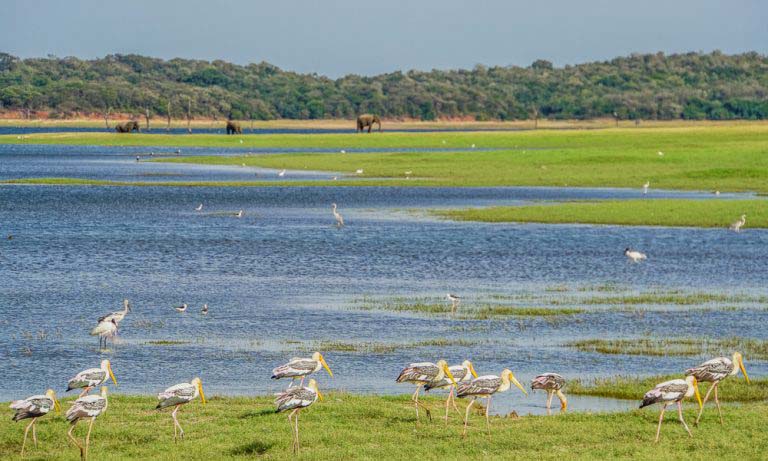
Kaudulla National Park
Kaudulla is a recently established national park in the heart of the cultural triangle. Kaudulla affords excellent potential for viewing elephants and other species of wildlife. The location is within easy reach of Sevanagama Villa.
Twenty four species have been reported from this park. The most important of them is the wild elephant, having a population of approximately 200. Twenty six species of fish are found in the reservoir as well as 435 species of birds endemic to Sri Lanka.
(Courtesy: Dept. of Wildlife Conservation)
